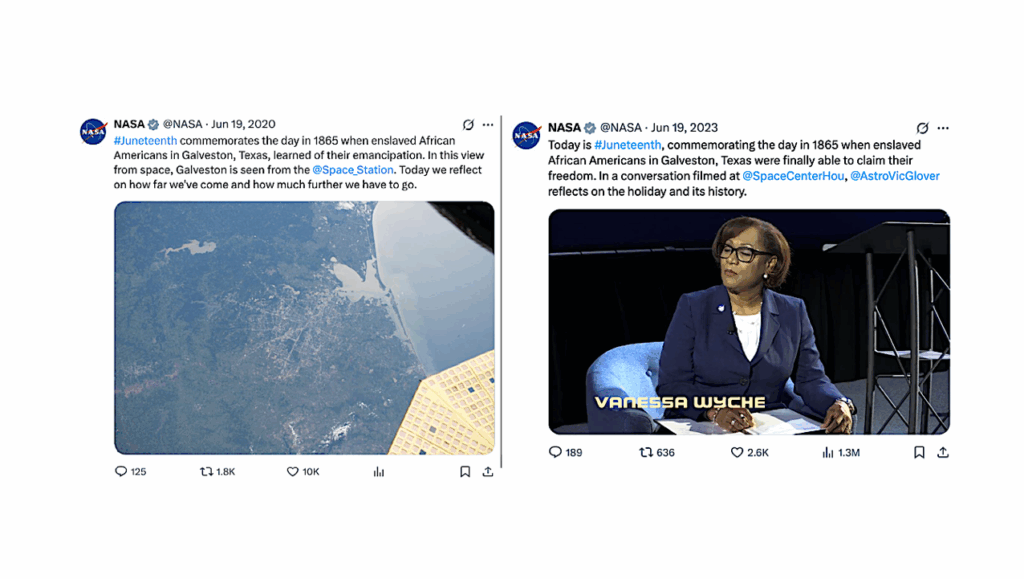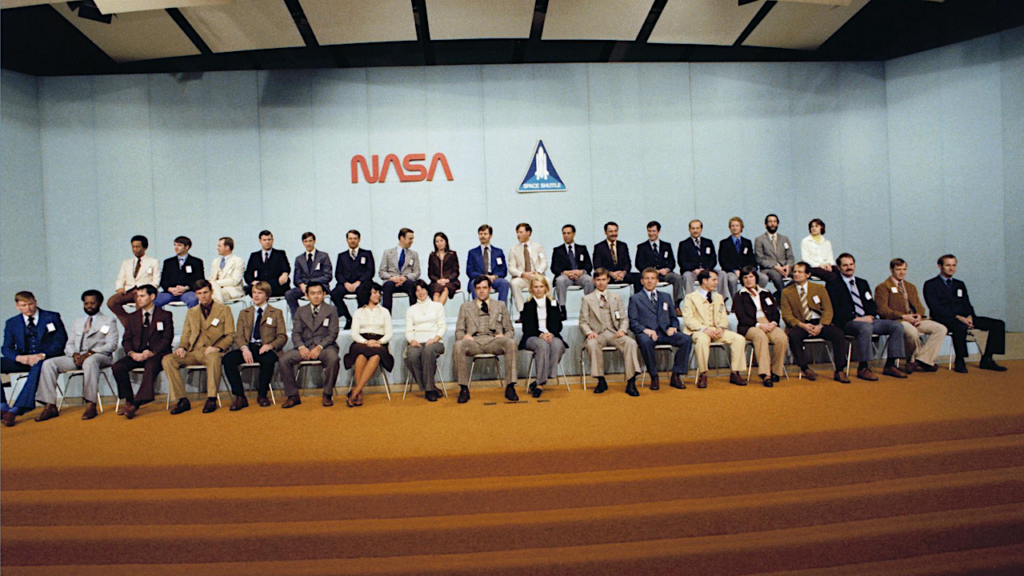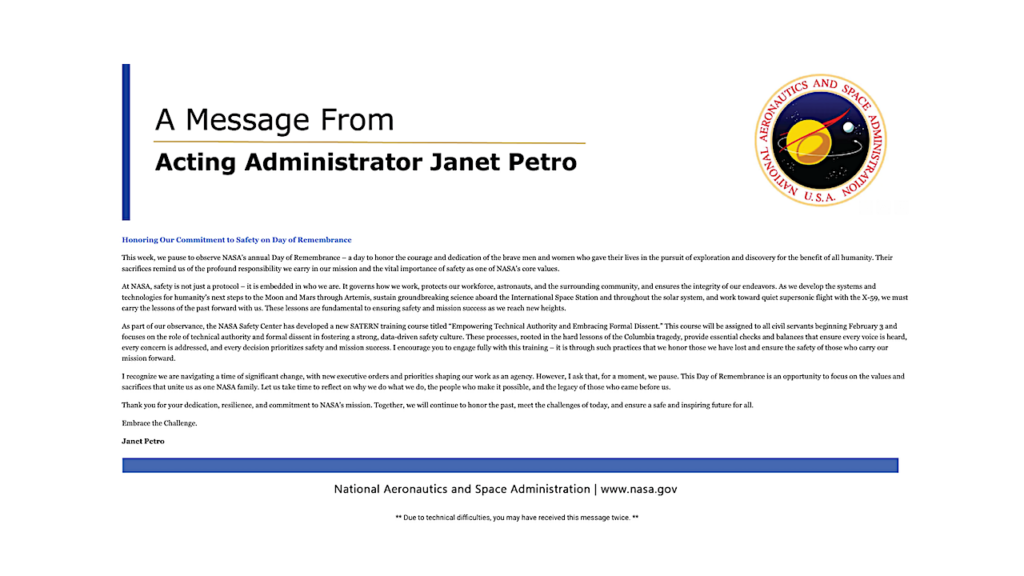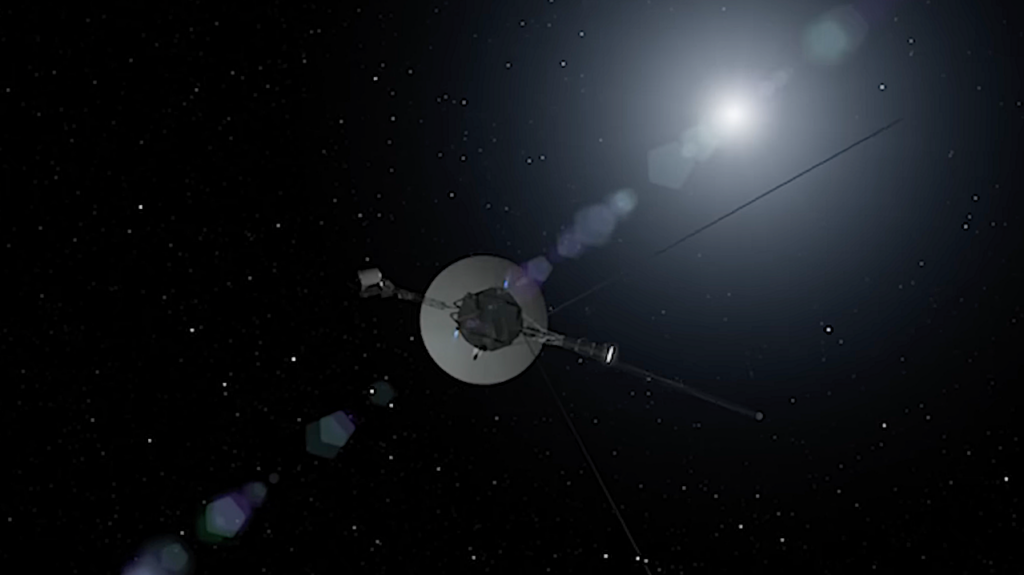Destroying History Is Never Smart, NASA

NASA Destroyed Hundreds of Mystery Tapes Found in a Dead Man’s Basement, Motherboard
“NASA takes records retention matters very seriously, so upon receiving notice about these former NASA assets, NASA undertook a new inspection in 2015-2016,” a NASA spokesperson told me on Monday. “NASA determined that the magnetic tapes were in all likelihood erased prior to their original disposition,” they added. “In addition, the tapes were suffering from extensive mold contamination. Weighing these factors, the agency determined the magnetic tapes were of no intrinsic or informational value to the agency.” But if the dates on the tapes are accurate, ranging from 1961 to 1974, they coincide with a time in NASA history when thousands of data reels were destroyed, abandoned, or repurposed. As a result, there are gaps in data from many of NASA’s older missions.”









Not everything that is old is worth preserving. Much is, but not all. Even in a best case scenario, what great lost piece of data do you imagine would be on those tapes? (After a lot of money was spent rebuilding the capability to read the tapes of old systems retired decades ago)
Under the circumstances, the data was probably gone (mold growing on them does speak well of the tapes condition) and without knowing what is on them, or if those data had already been copied to a more modern medium, trying to salvage the data probably wasn’t worth the cost.
But not knowing what was on them is a bit sloppy. I do know of a couple Voyager data sets that spent decade on tape, simply because the computer power to fully process them didn’t exist c.a. 1980. One, fortunately, was salvaged around 2000. The other is probably just gone. In the case of this story, just stamping, “copied and released to different project,” on them might have been enough to avoid potential loss of important data. Since that wasn’t a common practice at the time, we’ll never know.
Nonsense. It is extremely unlikely that 60’s and 70’s tapes with their low data density degrade to such an extent as to suffer absolute loss of the data in the information theoretic sense. No doubt traces remained that could be recovered with the proper tools, or tools as-yet unimagined or not built.
China has discovered the final resting place of the first emporer, yet for decades the site has been under lock and key instead of being an archaeological dig site, since digs are necessarily destructive and they want to preserve the site as-is until better technology develops. NASA could have learned a thing or two from this.
I understand about the archeology. In fact, I was recently in Gamla Uppsala (a side trip at a conference) and they are intentionally not excavating a couple of the barrows for exactly this reason. (The fact that the first two were excavated with the typical care of late-19th century archeologists probably contributed to this decision. And, of course, since I was there with a bunch of scientists, i.e. geeks, we immediately started guessing at requirements for ground-penetrating radars, if you could do some sort of acoustic sounding, etc.)
But you have to think about the time scales involved. The mounds at Uppsala are about 1500 years old. The Chinese site you mentioned was Qin Shi Huang’s, then it’s about 2300 years old. Leaving one of those sites untouched for 100 years would make very little difference to the contents, but a tremendous difference to the technology for non-destructive archeology. For 1970s magnetic tape, the information content is degrading with time, and at a fairly rapid rate. Worse, the recovery would depend on ancillary documentation (or metadata, if you like that term.) That’s less and less available as time passes.
Plus in all of the many NASA buildings you are telling me there isnt room for a coupel filing cabinets where you can lock them up until some intern can figure it out? Smells of laziness.
Considering the challenging condition in which the tapes were found, it would seem logical to at least take a random sample of one or two of them and restore them at least partially, to get some sense of what was there at the cost of a modest investment. Destroying them while have no idea what was there is a very disappointing choice.
I’m not sure how much you could get out of random sampling (or partial or fragmentary recovery.) Most spacecraft data from that period is pretty cryptic. People have done things like cram in as much data as they could, or in whatever way was easiest for the limited CPU power available on spacecraft.
I mean things like stuffing a 0-15 counter into the same byte as four boolean flags. IEEE representation of numbers is an optional thing, and I wouldn’t be surprised if the some data records had big and little endian values mixed in together.
If you already know what the tapes hold, and can find a copy of the telemetry dictionary, you could probably salvage fragmentary data. But I don’t think you could use fragmentary data to deduce the spacecraft subsystem the data came from.
About as hairy as, say, deciphering a SETI signal.
It could be easier or harder. If the aliens were actually trying to communicate, their signals might be easier to decipher than telemetry from our own spacecraft. If the aliens were simply trying to send HDTV conference calls from one of their planets to another, that would be harder to decipher.
That’s one reason I’m a little pessimistic the usual SETI search criteria. At a certain level, there isn’t much difference between data compression and data encryption. Both are designed to remove patterns and repetition, either to remove redundancy or to remove information useful to force or break to coding. The end result is making the data stream look random.
Magnetic tapes hold a great deal of data very well. Sometimes it wasnt all pulled off or the conversion was poor. Look at the LOIRP effort for example.
Search this site for LOIRP to get Keith’s running diary on what they faced and the level of success. It was an enormous effort.
But everyone knows it’s difficult and expensive. That’s the hell of it. Can’t make a decision without knowing something about the contents, and can’t learn about the contents without spending a lot of money.
Why in the world would they have not given the tapes to these guys:
http://www.skycorpinc.com/l…
If anyone could get data off of them, I bet it’s the Lunar Orbiter Image Recovery guys.
I seem to recall from Ted Stryk that the digital imaging data from Pioneer was lost, and all we have a prints of the 1973 reconstructions.
http://planetimages.blogspo…
This was all done to hide the fact that NASA faked the moon landings and that alians from Zoltar have taken over the government.
Zoltar? Really? You should bone up on your history. Zoltar is SO 30th century.
Yes, NASA should have made an effort, or at least donated the tapes to a group that does care about history.
It is sad NASA doesn’t seem to care about its history. Look at how folks are trying to raise money on kickstarter to save the Apollo Era mission control. You think with all the money NASA gets it could just restore it.
http://www.collectspace.com…
“”With your help, we can make this room look just the way it did in July
1969, as we guided Armstrong and Aldrin to the moon’s surface,” says
flight director Gene Kranz, who led Mission Control for the Apollo 11
landing, in a video posted on the Kickstarter website.
“Join us now in saving Mission Control, so we can celebrate a great
leap for mankind and inspire the imaginations of future generations.”
There’s a lot missing from this post.
Surely there is an official NASA procedure, associated checklist, and requirement for a report that must be followed before anything is declared surplus?
And one of the boxes requiring a check mark would be something like “does the data exist or was it previously extracted”?
I can’t speak for disposal of property within a NASA center, but for contractors, there may or may not be requirements for disposal. Specifically, it depends on how much it cost.
Below a certain value (e.g. $5000 for a computer in 2017) it isn’t tracked as carefully, and is something the contractor is supposed to cover on their own (well, out of the overhead they charge on government contracts.) For example, that’s the case for the external drive I use to back up my laptop.
Above a certain value, the hardware is charged to contract, tagged as government equipment, and tracked pretty carefully. You aren’t even supposed to use that sort of hardware for a different project without permission. (E.g. hardware purchased off the Cassini project may not be freely shifted to Europa Clipper, even after the Cassini mission ends. It can be, but it takes some paperwork.) If I had a early-1980s VAX computer, tagged as government property, I’d get in trouble if I just threw it out (or donated it to a museum…)
That said, these rules haven’t been in place forever. Things were probably different and possibly less formal in 1970. Also, Those requirements are based on the purchase price of the hardware and who payed for it. Not on the value of the contents. So the secrets of the universe stored on a $50 thumb drive wouldn’t be covered, while a list of the people who went to the office Christmas party would be, if they were stored on a $10,000, rad-hard, MILSPEC EEPROM chip.
Background. There was a period of time around 1990-2000 that NASA was in the mode of “archiving” everything on their new fangled servers, and then destroying hard copies. Also at that time anything other than Shuttle was deemed obsolete and not worth keeping. After all no one was planning on building saturn style rockets anymore right. Some engineers, dubious of the archiving process (or frustrated by it) rather than see their lifes work flushed down the electronic memory hole kept the originals in their labs, garages, and basements. This isnt a surprising story at all except that NASA destroyed them – hopefully they thoroughly checked that they were indeed blank. Who knows what was on them – maybe nothing, but at least one engineer thought they were worth keeping and he isnt talking now. Look at what all the LOIRP folks have found that would otherwise have been lost to history.
There was a lack of record retention and information loss prevention in the past. Many well meaning employees just took paper and computer files home for storage when they found out the records were to be destroyed. What’s worse is that much of the old computer media is unreadable due to damage to the media or lack of hardware or software to read the data.
You have to consider what was on the tapes vs the amount of effort needed to read them. I have junked hundreds of exabytes and 9-tracks. Just figuring out what was on them beyond the written label could be a full-time job. I don’t even know how you’d read them anymore. My last NASA center job tossed it’s last 9-track drives years ago, and even drives for what I think of as “new” formats like exabyte and DATs have been gone for years. A given tape in someone’s basement is more likely to contain some backups of old email than some valuable mission data. And the odds of successfully reading a tape this old are even lower.
You are aware of the Lunar Orbiter Image Recovery Project …
I am aware of both the LOIRP and ISEE-3 projects. But could you remind me of some of the details? Did they work from old tapes of unknown content? Or did they work from tapes of known content, all be it in archaic format, and documentation on those formats?